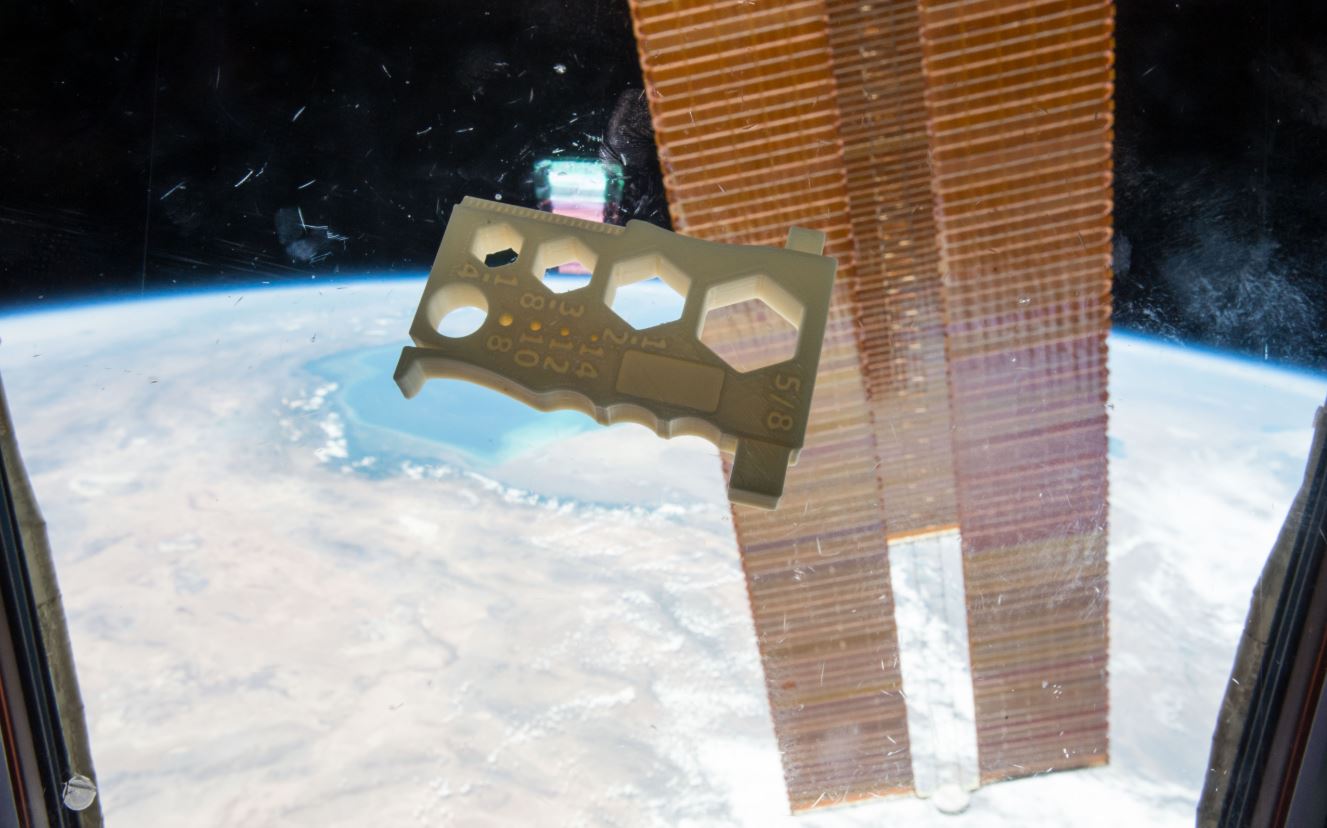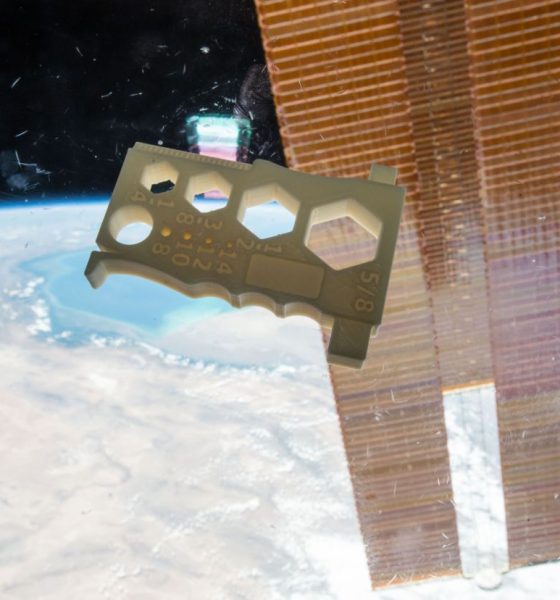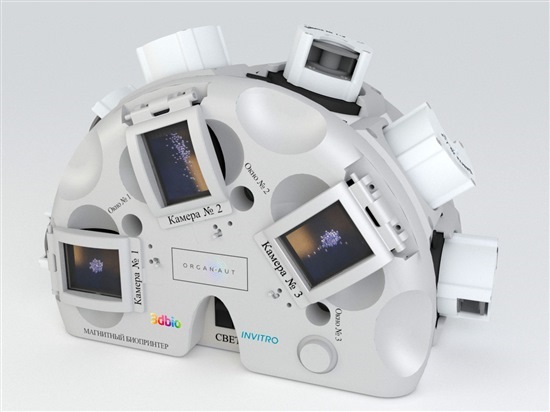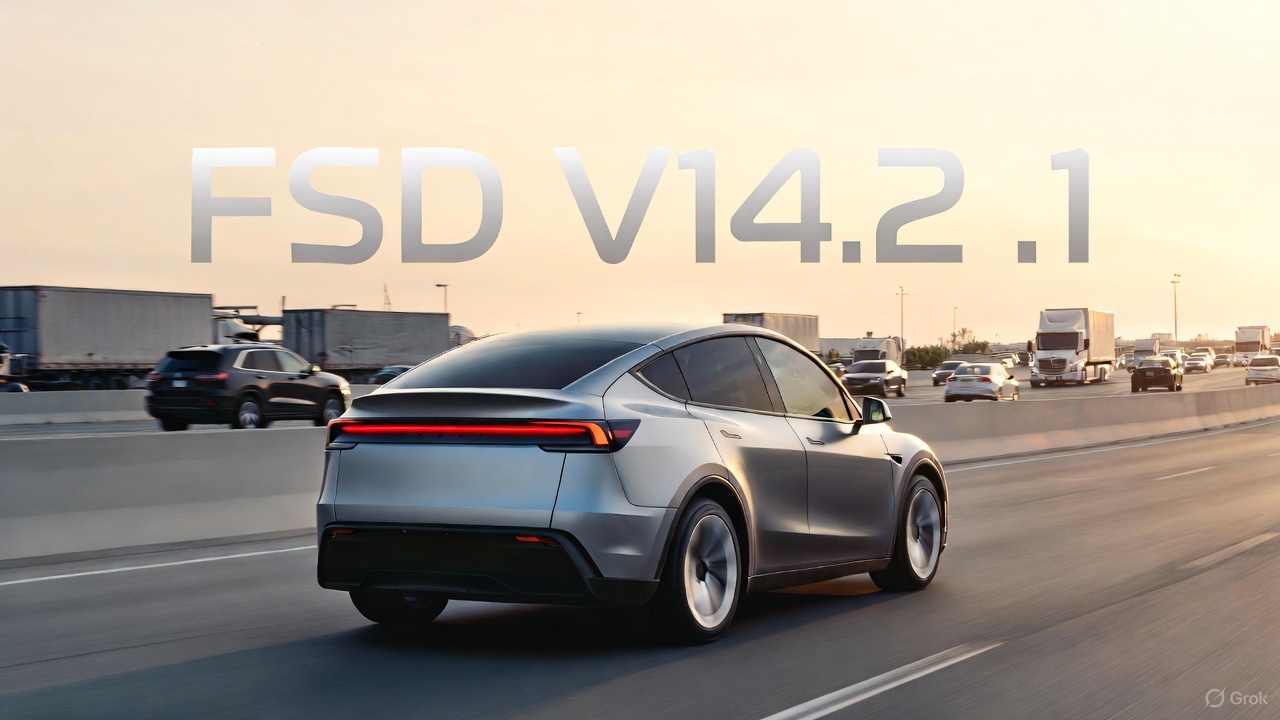

News
First living tissue 3D printed in space aboard International Space Station
Using the “Organaut”, a 3D bioprinter designed for microgravity, Russia has become the first country to print living tissue in space. After a December 3rd cargo delivery to the International Space Station (ISS), cosmonaut Oleg Kononenko completed an experiment with the machine in the Russian sector of the station, successfully producing human cartilage tissue and a rodent thyroid gland. The Organaut was designed via a collaboration with the printer’s maker, 3D Bioprinting Solutions, and Russia’s national space agency, Roscosmos. The United States also has its own bioprinting mission scheduled for the first half of 2019, joining in the march to develop biological solutions for problems that space is well suited to solve.
A 3D bioprinter operates by creating one layer at a time of specified tissue or stem cell material arranged as needed to grow and form as biologically programmed to do. As summarized by Aryeh Batt, the CEO of Precise Bio, a company dedicated to 3D printed bioproducts for human eyes, “Essentially, the biology does the work, but you have to put them in the correct environment to make it happen.” In the case of Organaut, an internal robotic mechanism drips living cell fabric layers from an automatic syringe. When living tissue is bioprinted under Earth’s gravity, the artificial cells grow in a flatter structure than their natural state in the human body. In microgravity, however, they form a shape closer to their normal dimensions.
Along with demonstrating the growth advantages of microgravity, Organaut’s tissue samples will provide the ability to study the effect of radiation on the body. “We will look at how the constructs came together, and how they behaved,” confirmed Usef Hesuani, head of laboratory projects and a managing partner of 3D Bioprinting Solutions in a recent press conference. The original Organaut printer was aboard the Soyuz MS-10 spacecraft which experienced an launch failure on October 11, 2018, forcing the U.S. and Russian crew to make an emergency landing. A second one was quickly put together for the subsequent mission.

The parent company of 3D Bioprinting Solutions is INVITRO, the largest private medical company in Russia. Founded in 1995 by Aleksandr Ostrovsky, it has 8 laboratories and over 1000 medical offices in eastern Europe, but is primarily based in Skolkovo, a high technology business area in Moscow. Bioprinting Solutions made headlines in 2015 when it printed and transplanted a functioning mouse thyroid gland. The experiment performed aboard the ISS with Organaut was a modified version of their prior work.
Unlike NASA, Roscosmos does not generally partner with private companies for its research endeavors. In an effort to inspire Russian students to enter STEM fields within their country, the agency sought to spotlight the developing bioprinting industry by using the Organaut. The successful partnership with 3D Bioprinting Solutions has now motivated the agency to continue partnering with private companies in the future. The company itself also sees advantages to collaborations of its own with other Skolkova-area manufacturers. “We have companies that are making satellite platforms…it is possible to conduct a similar experiment amid microgravity on small spacecraft [like satellites]…smaller and cheaper,” noted Ivan Kosenkov, 3D Bioprinting Solutions’ project manager.
Organaut’s printed tissues were returned to Earth with the Soyuz MS-09 spacecraft on December 20th, and the results of the experiment are expected to be published at the end of January 2019. In February, NASA plans to send a bioprinter capable of producing beating heart tissue to the ISS. Named the 3D BioFabrication Facility (BFF), the machine was developed through a partnership with two companies well-established in 3D printing and on-orbit hardware, nScrypt and Techshot. Since the thickness of heart tissue is difficult to build under gravity without structural assistance that could impede functionality, the companies developed the BFF with the hypothesis that microgravity would overcome this limitation. Thus far, the concept has been proven during parabolic flight tests, i.e., aboard the “Vomit Comet” airplane that performs multiple parabolic maneuvers in an airliner to create 20-30 seconds of weightlessness each.

News
Tesla FSD V14.2.1 is earning rave reviews from users in diverse conditions
Tesla’s Full Self-Driving (Supervised) software continues its rapid evolution, with the latest V14.2.1 update drawing widespread praise.

Tesla’s Full Self-Driving (Supervised) software continues its rapid evolution, with the latest V14.2.1 update drawing widespread praise for its smoother performance and smarter decision-making.
Videos and firsthand accounts from Tesla owners highlight V14.2.1 as an update that improves navigation responsiveness, sign recognition, and overall fluidity, among other things. Some drivers have even described it as “more alive than ever,” hinting at the system eventually feeling “sentient,” as Elon Musk has predicted.
FSD V14.2.1 first impressions
Early adopters are buzzing about how V14.2.1 feels less intrusive while staying vigilant. In a post shared on X, Tesla owner @LactoseLunatic described the update as a “huge leap forward,” adding that the system remains “incredibly assertive but still safe.”
Another Tesla driver, Devin Olsenn, who logged ~600 km on V14.2.1, reported no safety disengagements, with the car feeling “more alive than ever.” The Tesla owner noted that his wife now defaults to using FSD V14, as the system is already very smooth and refined.
Adverse weather and regulatory zones are testing grounds where V14.2.1 shines, at least according to testers in snow areas. Tesla watcher Sawyer Merritt shared a video of his first snowy drive on unplowed rural roads in New Hampshire, where FSD did great and erred on the side of caution. As per Merritt, FSD V14.2.1 was “extra cautious” but it performed well overall.
Sign recognition and freeway prowess
Sign recognition also seemed to show improvements with FSD V14.2.1. Longtime FSD tester Chuck Cook highlighted a clip from his upcoming first-impressions video, showcasing improved school zone behavior. “I think it read the signs better,” he observed, though in standard mode, it didn’t fully drop to 15 mph within the short timeframe. This nuance points to V14.2.1’s growing awareness of temporal rules, a step toward fewer false positives in dynamic environments.
FSD V14.2.1 also seems to excel in high-stress highway scenarios. Fellow FSD tester @BLKMDL3 posted a video of FSD V14.2.1 managing a multi-lane freeway closure due to a police chase-related accident. “Perfectly handles all lanes of the freeway merging into one,” the Tesla owner noted in his post on X.
FSD V14.2.1 was released on Thanksgiving, much to the pleasant surprise of Tesla owners. The update’s release notes are almost identical to the system’s previous iteration, save for one line item read, “Camera visibility can lead to increased attention monitoring sensitivity.”
News
Tesla FSD Supervised ride-alongs in Europe begin in Italy, France, and Germany
The program allows the public to hop in as a non-driving observer to witness FSD navigate urban streets firsthand.

Tesla has kicked off passenger ride-alongs for Full Self-Driving (Supervised) in Italy, France and Germany. The program allows the public to hop in as a non-driving observer to witness FSD navigate urban streets firsthand.
The program, detailed on Tesla’s event pages, arrives ahead of a potential early 2026 Dutch regulatory approval that could unlock a potential EU-wide rollout for FSD.
Hands-Off Demos
Tesla’s ride-along invites participants to “ride along in the passenger seat to experience how it handles real-world traffic & the most stressful parts of daily driving, making the roads safer for all,” as per the company’s announcement on X through its official Tesla Europe & Middle East account.
Sign-ups via localized pages offer free slots through December, with Tesla teams piloting vehicles through city streets, roundabouts and highways.
“Be one of the first to experience Full Self-Driving (Supervised) from the passenger seat. Our team will take you along as a passenger and show you how Full Self-Driving (Supervised) works under real-world road conditions,” Tesla wrote. “Discover how it reacts to live traffic and masters the most stressful parts of driving to make the roads safer for you and others. Come join us to learn how we are moving closer to a fully autonomous future.”
Building trust towards an FSD Unsupervised rollout
Tesla’s FSD (Supervised) ride-alongs could be an effective tool to build trust and get regular car buyers and commuters used to the idea of vehicles driving themselves. By seating riders shotgun, Tesla could provide participants with a front row seat to the bleeding edge of consumer-grade driverless systems.
FSD (Supervised) has already been rolled out to several countries, such as the United States, Canada, Australia, New Zealand, and partially in China. So far, FSD (Supervised) has been received positively by drivers, as it really makes driving tasks and long trips significantly easier and more pleasant.
FSD is a key safety feature as well, which became all too evident when a Tesla driving on FSD was hit by what seemed to be a meteorite in Australia. The vehicle moved safely despite the impact, though the same would likely not be true had the car been driven manually.
News
Swedish union rep pissed that Tesla is working around a postal blockade they started
Tesla Sweden is now using dozens of private residences as a way to obtain license plates for its vehicles.

Two years into their postal blockade, Swedish unions are outraged that Tesla is still able to provide its customers’ vehicles with valid plates through various clever workarounds.
Seko chairman Gabriella Lavecchia called it “embarrassing” that the world’s largest EV maker, owned by CEO Elon Musk, refuses to simply roll over and accept the unions’ demands.
Unions shocked Tesla won’t just roll over and surrender
The postal unions’ blockade began in November 2023 when Seko and IF Metall-linked unions stopped all mail to Tesla sites to force a collective agreement. License plates for Tesla vehicles instantly became the perfect pressure point, as noted in a Dagens Arbete report.
Tesla responded by implementing initiatives to work around the blockades. A recent investigation from Arbetet revealed that Tesla Sweden is now using dozens of private residences, including one employee’s parents’ house in Trångsund and a customer-relations staffer’s home in Vårby, as a way to obtain license plates for its vehicles.
Seko chairman Gabriella Lavecchia is not pleased that Tesla Sweden is working around the unions’ efforts yet again. “It is embarrassing that one of the world’s largest car companies, owned by one of the world’s richest people, has sunk this low,” she told the outlet. “Unfortunately, it is completely frivolous that such a large company conducts business in this way.”
Two years on and plates are still being received
The Swedish Transport Agency has confirmed Tesla is still using several different workarounds to overcome the unions’ blockades.
As noted by DA, Tesla Sweden previously used different addresses to receive its license plates. At one point, the electric vehicle maker used addresses for car care shops. Tesla Sweden reportedly used this strategy in Östermalm in Stockholm, as well as in Norrköping and Gothenburg.
Another strategy that Tesla Sweden reportedly implemented involved replacement plates being ordered by private individuals when vehicles change hands from Tesla to car buyers. There have also been cases where the police have reportedly issued temporary plates to Tesla vehicles.









